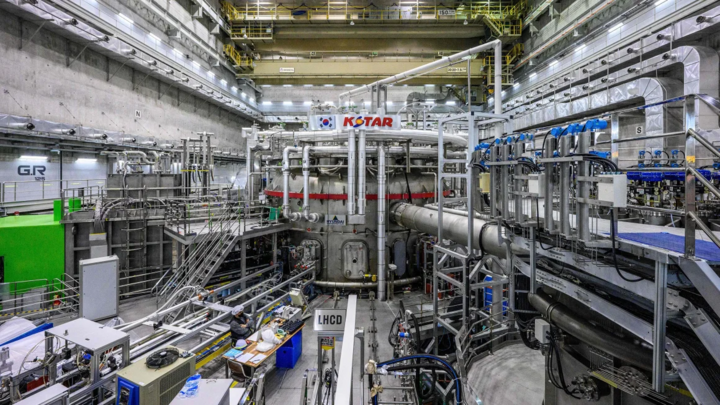‘Artificial Sun’ in South Korea Sets Record for Sustaining 100 Million Degrees Celsius

South Korean scientists have achieved a new world record in sustaining a temperature of 100 million degrees Celsius, which is seven times hotter than the core of the Sun, in a nuclear fusion experiment. This breakthrough in energy technology marks a significant milestone.
The Superconducting Tokamak Advanced Research (KSTAR) nuclear fusion reactor, also known as an “artificial sun,” successfully maintained a temperature of 100 million degrees for 48 seconds. This achievement was recorded during experiments conducted from December 2023 to February 2024, surpassing the previous record of 30 seconds set in 2021.
Nuclear fusion is a process that simulates how stars produce light and heat by combining hydrogen nuclei and other light elements, releasing enormous amounts of energy. Scientists hope that nuclear fusion reactors can provide limitless energy without carbon emissions, thus mitigating the impact of climate change. However, mastering this process on Earth has proven extremely challenging.
According to KSTAR’s Research Center Director Yoon Si-woo, maintaining high plasma density and temperature for prolonged periods is crucial for efficient nuclear fusion reactions. Scientists achieved the extended duration by adjusting the process, including the use of tungsten instead of carbon in the divertor components that remove heat and impurities generated by the nuclear fusion reaction.
Tungsten has the highest melting point among all metals, and the upgrade to tungsten has largely contributed to KSTAR’s success in maintaining the H-mode regime for a longer duration. The National Research Council for Science and Technology (NST) stated, “Compared to previous carbon divertors, the new tungsten divertor only experienced a 25% temperature increase on its surface under similar heat loads. This brings significant benefits to long-pulse high-energy operations.”
KSTAR’s ultimate goal is to sustain a plasma temperature of 100 million degrees Celsius for 300 seconds by 2026, which Director Yoon Si-woo referred to as the “limit point” necessary to expand the scale of nuclear fusion operations.
The advancements made by South Korean scientists will contribute to the development of the International Thermonuclear Experimental Reactor (ITER) in southern France. ITER is the world’s largest nuclear fusion reactor project aimed at demonstrating the feasibility of nuclear fusion reactions and involves the participation of numerous countries, including South Korea, China, the United States, Russia, and EU member states.
Director Yoon Si-woo emphasized that KSTAR’s achievements “will play a crucial role in ensuring the expected performance of ITER on schedule and promoting the commercialization of nuclear fusion energy.”
In 2022, scientists at the Lawrence Livermore National Laboratory in the United States made history by successfully achieving a nuclear fusion reaction that released more energy than consumed. Additionally, researchers in Oxford, UK, set a new record in February of this year by generating an unprecedented amount of energy in a nuclear fusion reaction, enough to power approximately 12,000 homes for five seconds.
Despite these advancements, commercializing nuclear fusion energy still faces significant technical and scientific challenges. Aneeqa Khan, a nuclear fusion researcher at the University of Manchester, UK, stated that nuclear fusion is “not yet ready and, therefore, cannot help us address the climate crisis immediately.” However, she also added that, if the progress continues, nuclear fusion could become part of the mix of green energy sources by the second half of the century.
